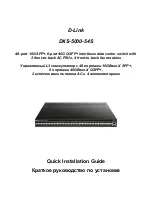
7
AZM150
Operating instructions
Solenoid interlock
EN
4.2 Contact Options
Contacts shown in a de-energised condition and with the actuator
inserted.
Power to unlock
Guard system closed
and interlocked
Power to lock
Guard system closed
and not interlocked
A1
A2
A1
A2
AZM150...-02/11
AZM150...-02/11...A
43
31
32
44
21
11
12
22
43
31
32
44
21
11
12
22
AZM150...-11/11
AZM150...-11/11...A
43
31
32
44
23
11
12
24
43
31
32
44
23
11
12
24
AZM150...-11/02
AZM150...-11/02...A
41
31
32
42
23
11
12
24
41
31
32
42
23
11
12
24
AZM150...-02/02
AZM150...-02/02...A
41
31
32
42
21
11
12
22
41
31
32
42
21
11
12
22
Key
Magnetic contact
B
Positive break NC contact
Monitoring the interlock according to EN ISO 14119
H
Actuated
4.3 Wiring examples
When routing the cables, account for an offset of the terminals at the
left and right terminal screws.
Route the cables neatly next to or above the other cables.
11-12
21-22
31-
A1
A2
1.
1.
2.
2.
3.
3.
4.
4.
A1
A2
1.
1.
2.
2.
3.
3.
4.
4.
11-
A1
A2
1.
1.
2.
2.
3.
3.
4.
4.
11-
5. Set-up and maintenance
5.1 Functional testing
The safety function of the safety components must be tested. The
following conditions must be previously checked and met:
1. Fitting of the solenoid interlock and the actuator
2. Check the integrity of the cable entry and connections
3. Check the switch enclosure for damage
4. Check that both the cover-side and rear
manual releases are in the starting position
5.2 Maintenance
A regular visual inspection and functional test, including the following
steps, is recommended:
1. Check for tight installation of the actuator and the switch
2. Remove particles of dust and soiling
3. Check cable entry and connections
Adequate measures must be taken to ensure protection
against tampering either to prevent tampering of the safety
guard, for instance by means of replacement actuators.
Damaged or defective components must be replaced.
6. Disassembly and disposal
6.1 Disassembly
The safety switchgear must be disassembled in a de-energised
condition only.
6.2 Disposal
The safety switchgear must be disposed of in an appropriate manner in
accordance with the national prescriptions and legislations.


























